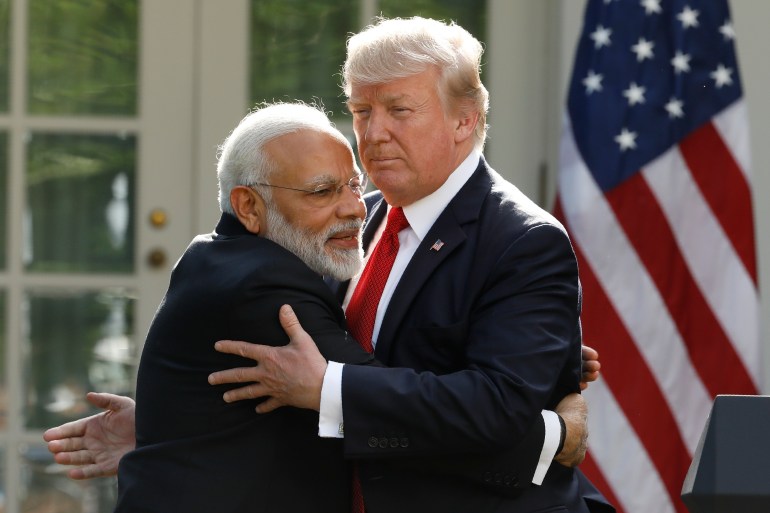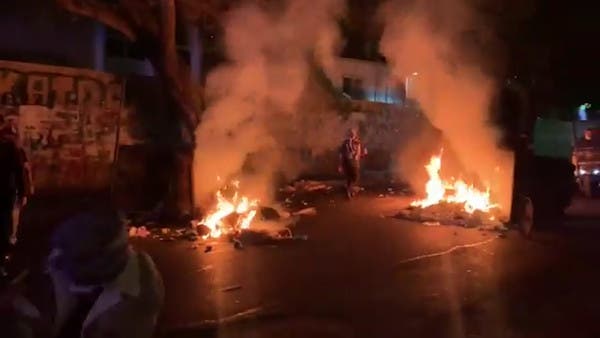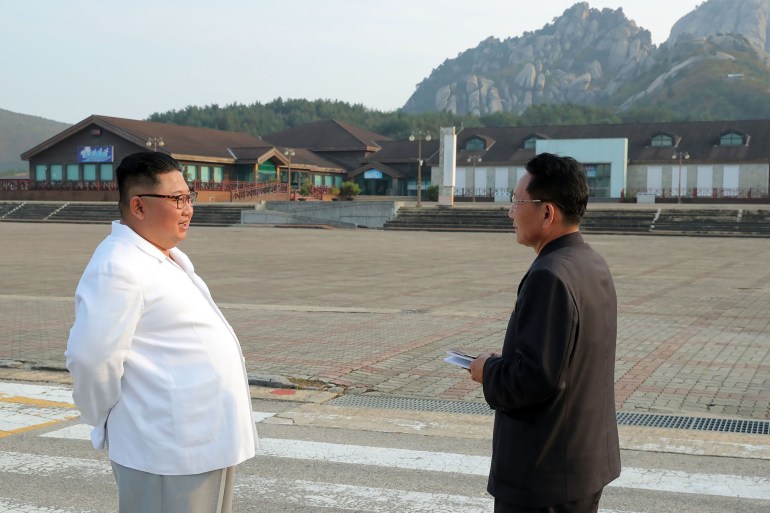OPINION
How Huntington and Fukuyama got the 21st century wrong
A decided turn towards authoritarianism, to offset popular dissent, is arguably becoming a defining feature of politics in Asia, the Middle East, and South America, and indeed in the democratic West, as well.
Howard Brasted
Professor of History and Islamic studies at the University of New England
Shafi Mostofa
Assistant Professor at the University of Dhaka.19 Dec 2020
ARYAN BRETHERN 
India's Prime Minister Narendra Modi hugs US President Donald Trump as they give joint statements in the Rose Garden of the White House in Washington, US, June 26, 2017. [Kevin Lamarque/Reuters]
What is going on in the 21st-century world of international politics? With very few exceptions, national elections are revealing degrees of partisanship and ideological polarisation among voters never seen before. It seems not to be a rare occurrence these days that the losers are either claiming that they are actually the winners or that the results have been rigged by their opponents and can therefore be disregarded.
This is the farcical game outgoing President Donald Trump is currently playing in the United States, despite there being little or no evidence that President-elect Joe Biden and the Democratic party committed the widespread electoral fraud he wildly accuses them of. As Republican Governor Larry Hogan of Maryland has openly lamented, today the US risks being seen as a “banana republic” rather than as the leader of the democratic world.
Despite this, hordes of Republican supporters continue to rally behind the anti-democratic narrative that President Trump continually tweets. As one newspaper article pointed out, the “United” States has become the “Divided” States of America.
If the recent examples of Belarus and Myanmar are anything to go by as well, it would seem that opposition parties have little faith in the mechanism of democratic elections reconciling alienating differences or bringing citizens closer together. Creating divisiveness seems to be the order of the day, even in established democratic countries.
In India, the largest democracy in the world, for example, Prime Minister Narendra Modi secured a second term for his BJP government in 2019 with a campaign that demonised the Muslim minority as enemies. “Divider-in-Chief” was how Time magazine labelled him on one of its front covers.
Everywhere, the volatility of public opinion has confounded the pollsters and seen political scientists searching for explanations.
None of these developments was foreseen by two of the most prominent political scientists – Francis Fukuyama or Samuel P Huntington – in their respective grand theories of how the 21st century would unfold.
Following the ending of the Cold War, Fukuyama confidently predicted in an article titled, The End of History – and later in a book that liberal democracy would sweep through the world as the ultimate form of human government. In his view, the collapse of the Soviet Union meant that communism had failed as the obvious alternative, and political Islam as a political system was never likely to draw more than minority support.
Accordingly, the 21st century would experience, under America’s custodial guidance, the installation of a new world order based on a single global system of democracy, individualism, and free markets.
Although he drew on the same turn of events, the post-cold war world that Huntington conjured up in 1993 was very different. In his Foreign Affairs article titled, The Clash of Civilizations, he argued that international relations would be characterised not by consensus about liberal democracy, but by conflict between entire civilisations, particularly between Islam and the West. Huntington contended that substantial differences in culture and religion would propel the 21st century in the direction of inter-civilisational war. The fault lines between civilisations would specifically become the “battle lines of the future”.
As 2020 draws to an end, however, neither of these grand theories seems to be playing out the way their authors anticipated.
As early as 2006, when American forces were beginning to get bogged down in Afghanistan and Iraq, Fukuyama conceded that “liberal democracy” could not be imposed on people without their consent. By 2020, he was not even sure that “liberal democracy” existed in the US any more. For under Trump, he maintained, the US had become the epitome of “kakistocracy”, a government of the “worst”, not the best kind.
At a first glance, Huntington’s “clash of civilisations” theory may have been looked more successful. The 9/11 tragedy, the recurrent deadly lone-wolf attacks on non-Muslim targets, the ISIL’s (ISIS’s) proclamation of a new caliphate, and the “fault-line” tensions about the hijab and status of Muslim women in Western countries may lead some to think that there is indeed a major clash between the Islamic world and the West. In fact, even though Huntington died in 2008, his thesis has remained the standard reference point for thinking about the future direction of international relations and in just the past two years, it was cited more than 35,000 times on Google Scholar.
But a growing number of scholars (more accurate to say ‘the vast majority of scholars’. When thesis first came out it was roundly derided. It still is though less vehemently.) are simply not convinced that these happenings presage the kind of culturally-based religious conflict that Huntington foresaw breaking out on a cataclysmic. What collectively they take issue with is the reductionist basis of Huntington’s whole thesis. They part company with him over his key assumptions that Islam and the West constitute monolithic civilizations, that differences of religious culture will put them on a direct war footing, and that all Muslims will come to embrace the world order advanced by fundamentalist Islam. Niall Ferguson appears to be the only one prepared to countenance that Huntington’s prophecy could become “a real winner”.
Intra-civilisational fissures have undermined not only Fukuyama’s world system of liberal democracy, but also the cohesiveness of Huntington’s civilisational blocs. The erosion of the very hallmarks of American world order, such as open debate, the rule of law, and accountable government, have gradually devalued the currency of Western democracy, while bitter sectarian conflicts have set back any immediate prospect of a Muslim anti-West coalition forming.
What has arguably overtaken the envisaged ascendancy of “liberal democracy” and the placing of entire civilisations on a war footing has been the globalisation of neoliberal ideology and its concomitant by-product of populist reaction.
Neoliberalism, which nearly all capitalist societies have embraced since the 1980s, has verifiably resulted in the inequitable distribution of national wealth to the few who effectively exercise power and benefit most from the policies they promote. That the large majority of people acquiesces to a situation that ostensibly disadvantages them is due to the pervasiveness of neoliberal ideology and the difficulty of effectively questioning the global system it sustains.
Enter populism, a phenomenon that is changing political landscapes throughout the world, though in different ways. In the West, populism manifests itself as a groundswell of right-wing disaffection with liberal democratic governments and corrupt ruling establishments. Populism of this kind is driven by narratives that identify metropolitan elites and multinational outsiders as virtual enemies of the state.
In South Asia, populism has fed into top-down discourses that identify religious minorities as anti-national impediments to unity and development. In both Modi’s India and Mahinda Rajapaksa’s Sri Lanka, Muslims have been instrumentally targeted to garner populist support for policies that blunt opposition to their regimes and weaken constitutional checks on their use of power.
In Muslim Pakistan and Bangladesh, the omnipresence of India in their neighbourhood has always fed into populist narratives about the Hindu other and the role their respective armies play as the symbolic bulwarks of Islam.
While Huntington has been credited with incorporating a populist dimension into his “clash of civilization” thesis, he did not foresee that the trajectory populism might take would just as likely foment intra-state tensions as heighten inter-civilisational antagonisms.
A decided turn towards authoritarianism, to offset popular dissent, is arguably becoming a defining feature of politics in Asia, the Middle East, and South America, and indeed in the democratic West, as well. A political scientist looking into the crystal ball today might well project the remainder of the 21st century not in terms of looming civilizational war, but of increasing civil unrest.
The views expressed in this article are the authors’ own and do not necessarily reflect Al Jazeera’s editorial stance.

Howard Brasted
Professor of History and Islamic studies at the University of New England
Dr Howard Brasted is the Professor of History and Islamic studies at the University of New England, Australia.

Shafi Mostofa
Assistant Professor at the University of Dhaka.
Dr Shafi Md Mostofa is an Assistant Professor of World Religions and Culture at the University of Dhaka, Bangladesh, and an Adjunct Lecturer at the University of New England, Australia.
















